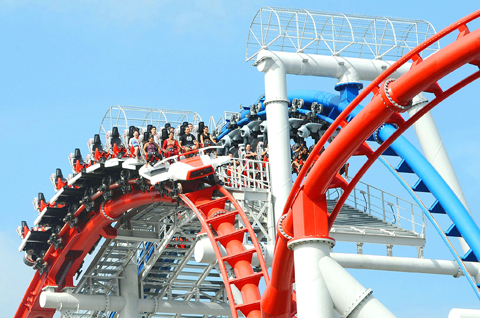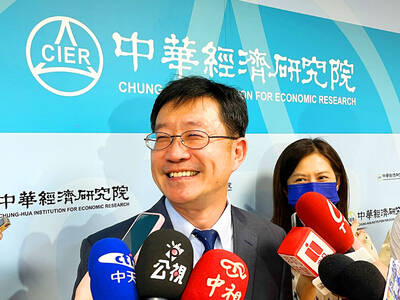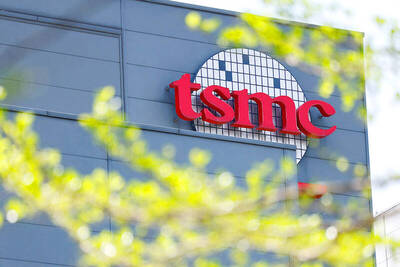When Singapore first announced it was building a Universal Studios theme park, skeptics wondered if the complex would draw enough crowds to be commercially viable.
However, just six months after opening, Universal Studios Singapore has already welcomed more than 1 million visitors, and other countries in Asia are building even bigger theme parks.
Asia has become the new frontier for large-scale outdoor entertainment complexes thanks to growing affluence in large emerging economies like China, India and Indonesia, and cheaper air travel.

PHOTO: AFP
“The industry is moving to Asia,” said Christian Aaen, Asian regional director of research firm AECOM Economics, which specializes in entertainment and leisure industry analysis. “With key fundamentals in place such as the growing middle class and incomes in Asia, as well as demand for entertainment and leisure time, this is the perfect product for tourism and economic development.”
Tokyo Disneyland and Disney Sea, the Universal Studios park in Osaka and South Korea’s homegrown Everland ranked among the world’s top 10 theme parks in terms of visitors last year, according to industry consultancy Themed Entertainment Association (TEA).
Encouraged by Asia’s promise, Universal Studios signed a deal in January to build its largest theme park in the world in South Korea at a cost of about US$2.67 billion.
When completed in 2014, the resort will be bigger than Universal Studios’ four other parks in Hollywood, Florida, Osaka and Singapore combined.
Disneyland has not fared well in Hong Kong — with a HK$70 million (US$9 million) loss last year, according to the South China Morning Post — but it is going ahead with a new franchise in Shanghai, with construction expected to start in November.
Denmark’s Legoland is setting up its first Asian branch in Malaysia’s Johore state close to Singapore, hiring builders to use the famous little plastic bricks to replicate national and state landmarks.
A recent Asian Development Bank (ADB) report said the region’s middle class was growing at an exponential rate and poised to become the world’s single biggest group of consumers.
In 2008, some 1.9 billion people were broadly classified by the ADB as part of the middle class in Asian developing countries, more than triple the group’s size of 565 million in 1990.
China in particular saw its middle class boom, with statistics showing the share of the Chinese population with daily incomes of US$6 to US$10 surging from 4.8 to 25.5 percent between 1995 and 2007.
In India, people in that income bracket increased from about 29 percent between 1993 and 1994 to 38 percent between 2004 and 2005, the ADB report showed.
Wealthy Singapore, which has only 5 million people, is a major beneficiary of Asia’s increasingly mobile middle class families.
Nearly 1.1 million tourists entered Singapore in July — a record high, thanks in part to Universal Studios — with Indonesia, China, Malaysia and India in the top five countries of origin along with Australia.
“As developing Asia’s people secure their middle-class status, its emerging consumers are very much expected to become the next global consumers and assume the traditional role of the US and European middle classes,” the ADB said.
Aaen said the opening of Universal Studios in Singapore “marked the beginning of the new decade where Asia will dominate and remain the primary region for future growth of the industry.”

WEAKER ACTIVITY: The sharpest deterioration was seen in the electronics and optical components sector, with the production index falling 13.2 points to 44.5 Taiwan’s manufacturing sector last month contracted for a second consecutive month, with the purchasing managers’ index (PMI) slipping to 48, reflecting ongoing caution over trade uncertainties, the Chung-Hua Institution for Economic Research (CIER, 中華經濟研究院) said yesterday. The decline reflects growing caution among companies amid uncertainty surrounding US tariffs, semiconductor duties and automotive import levies, and it is also likely linked to fading front-loading activity, CIER president Lien Hsien-ming (連賢明) said. “Some clients have started shifting orders to Southeast Asian countries where tariff regimes are already clear,” Lien told a news conference. Firms across the supply chain are also lowering stock levels to mitigate

IN THE AIR: While most companies said they were committed to North American operations, some added that production and costs would depend on the outcome of a US trade probe Leading local contract electronics makers Wistron Corp (緯創), Quanta Computer Inc (廣達), Inventec Corp (英業達) and Compal Electronics Inc (仁寶) are to maintain their North American expansion plans, despite Washington’s 20 percent tariff on Taiwanese goods. Wistron said it has long maintained a presence in the US, while distributing production across Taiwan, North America, Southeast Asia and Europe. The company is in talks with customers to align capacity with their site preferences, a company official told the Taipei Times by telephone on Friday. The company is still in talks with clients over who would bear the tariff costs, with the outcome pending further

Six Taiwanese companies, including contract chipmaker Taiwan Semiconductor Manufacturing Co (TSMC, 台積電), made the 2025 Fortune Global 500 list of the world’s largest firms by revenue. In a report published by New York-based Fortune magazine on Tuesday, Hon Hai Precision Industry Co (鴻海精密), also known as Foxconn Technology Group (富士康科技集團), ranked highest among Taiwanese firms, placing 28th with revenue of US$213.69 billion. Up 60 spots from last year, TSMC rose to No. 126 with US$90.16 billion in revenue, followed by Quanta Computer Inc (廣達) at 348th, Pegatron Corp (和碩) at 461st, CPC Corp, Taiwan (台灣中油) at 494th and Wistron Corp (緯創) at

NEGOTIATIONS: Semiconductors play an outsized role in Taiwan’s industrial and economic development and are a major driver of the Taiwan-US trade imbalance With US President Donald Trump threatening to impose tariffs on semiconductors, Taiwan is expected to face a significant challenge, as information and communications technology (ICT) products account for more than 70 percent of its exports to the US, Chung-Hua Institution for Economic Research (CIER, 中華經濟研究院) president Lien Hsien-ming (連賢明) said on Friday. Compared with other countries, semiconductors play a disproportionately large role in Taiwan’s industrial and economic development, Lien said. As the sixth-largest contributor to the US trade deficit, Taiwan recorded a US$73.9 billion trade surplus with the US last year — up from US$47.8 billion in 2023 — driven by strong